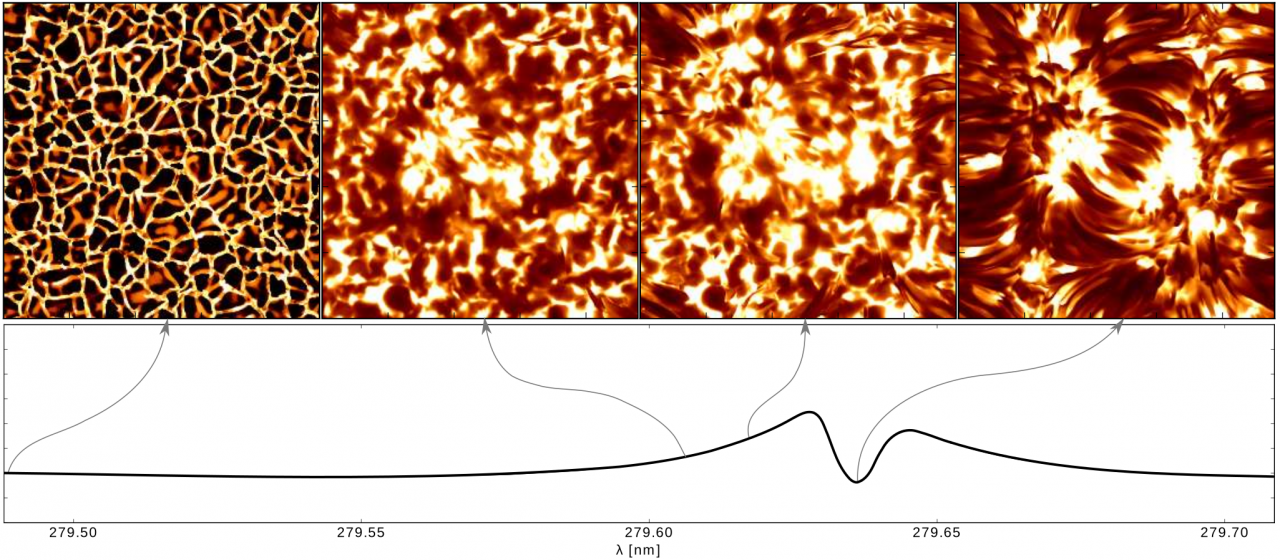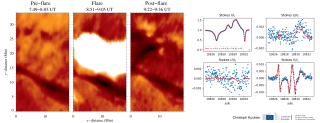General
Magnetic fields pervade all astrophysical plasmas and govern most of the variability in the Universe at intermediate time scales. They are present in stars across the whole Hertzsprung-Russell diagram, in galaxies, and even perhaps in the intergalactic medium. Polarized light provides the most reliable source of information at our disposal for the remote sensing of astrophysical magnetic fields, including those on the Sun. In particular, the diagnostics of solar and stellar magnetic fields requires the measurement and physical interpretation of polarization signatures in spectral lines, which are induced by various physical mechanisms taking place at the atomic level. In addition to the familiar Zeeman effect, polarization can also be generated by various other physical processes, such as atomic level polarization induced by anisotropic pumping mechanisms, quantum interference between fine-structured or hyperfine-structured energy levels, the Hanle effect, etc. Interestingly, the polarization produced by such mechanisms is sensitive to the physical conditions of the astrophysical plasma under consideration and, in particular, to the presence of magnetic fields in a parameter domain that goes from field intensities as small as 1 micro-G to many thousands of Gauss.
The main objective of this project is to explore in depth the physics and origin of polarized radiation in astrophysical plasmas as well as its diagnostic use for understanding cosmical magnetic fields, with emphasis on the magnetism of the extended solar atmosphere. Our investigations deal with:
-the theoretical understanding of relevant polarization physics, which requires new insights into the quantum theory of polarized light scattering in the presence of magnetic and electric fields.
-the development of plasma diagnostic tools for the investigation of astrophysical magnetic fields, with emphasis on the magnetism of the extended solar atmosphere, circumstellar envelopes and planetary nebulae.
-spectropolarimetric observations and their physical interpretation.
-radiative transfer in three-dimensional models of stellar atmospheres, resulting from magneto-hydrodynamical simulations.
-atomic and molecular spectroscopy and spectro-polarimetry, with applications in several fields of astrophysics.
This research project is formed by a group of scientists convinced of the importance of complementing theoretical and observational investigations in order to face some of the present challenges of 21st century Astrophysics.
Members
Results
- We applied deep learning techniques to the analysis of observations. Using convolutional neural networks, we developed techniques for the deconvolution of observational data. These techniques were also used to accelerate the deconvolution process of ground-based observations, achieving a cadence of around a hundred images processed per second.
- We developed an inference technique based on bayesian statistics in order to interpret the observations provided by the CLASP international experiment. By parametrizing a state-of-the-art magneto-hydrodynamical model of the solar atmosphere, we found that the geometrical complexity of the transition region must be much more complex than the one provided by the model.
- We solved the problem of polarized radiation transfer in magneto-convection simulations that account for small-scale dynamo action for the Sr I line at 460.7 nm. We found that the model with most of the convection zone magnetized close to the equipartition and a surface mean field strength of 170G is compatible with the available observations.
- We studied the magnetic sensitivity of the Ca I line at 422.7nm. The linear polarization at the core is sensitive to the Hanle effect, while the linear polarization in the wings is sensitive to the magneto-optical effects, as a consequence of the newly found effect resulting from the joint action of partial redistribution and the Zeeman effects.
- We studied the formation of the H-alpha, Mg II h-k, and Ca II H-K and 845.2nm in a model atmosphere of a flaring bipolar active region, solving the radiation transfer problem taking into account partial redistribution in full 3D geometry and out of local thermodynamical equilibrium. We succeeded in reproducing common observational features of such flaring regions.



